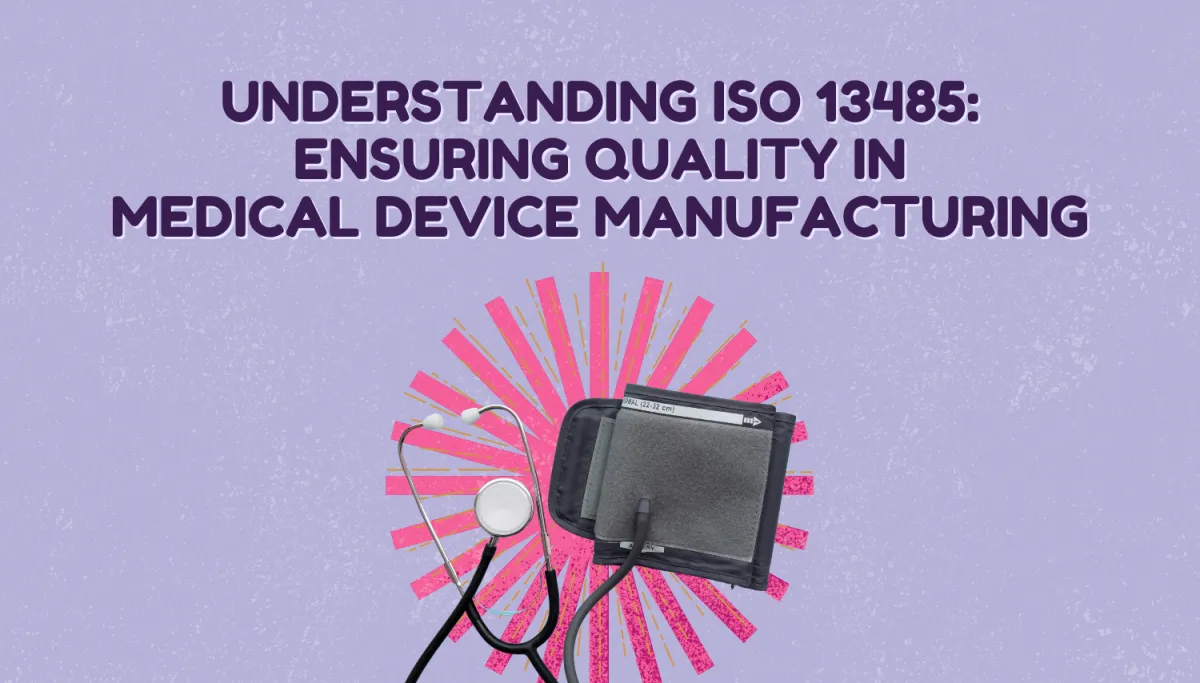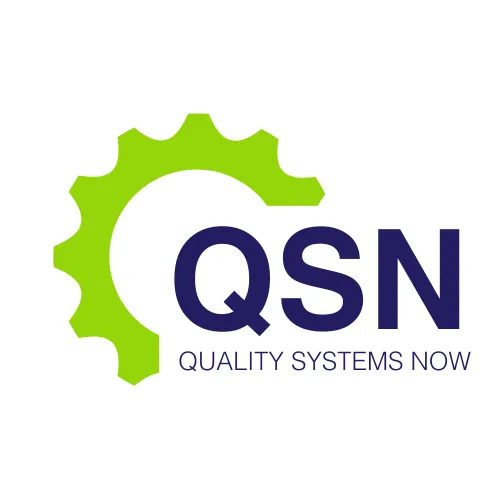LATEST NEWS

Understanding ISO 13485: Ensuring Quality in Medical Device Manufacturing
Introduction
ISO 13485 is an international standard that outlines the requirements for a comprehensive quality management system (QMS) for the design and manufacture of medical devices. This standard is crucial for organizations involved in any stage of a medical device's lifecycle, including design, development, production, installation, and servicing. By adhering to ISO 13485, companies can ensure that their products consistently meet customer and regulatory requirements, thereby enhancing safety and efficacy.
Our Services include helping companies achieve their ISO 13485 certification and maintain it ongoing - let's talk about how we can help you achieve your goals.
Historical Context and Evolution
ISO 13485 was first published in 1996 as a derivative of the ISO 9001 standard, with additional requirements specific to medical devices. The most recent revision, ISO 13485:2016, incorporates changes to reflect evolving industry practices and regulatory requirements. This version places greater emphasis on risk management, regulatory requirements, validation of processes and computer system, and maintaining effective processes throughout the supply chain.
Key Requirements of ISO 13485
ISO 13485 is built on several core principles, which can be categorized into the following main areas:
Quality Management System (QMS):
Organizations must establish, document, implement, and maintain a QMS tailored to their specific processes and product lines.
The QMS should cover all aspects of product realization, from design and development to production and post-market activities.
Management Responsibility:
Top management must demonstrate a commitment to the QMS by establishing a quality policy, setting quality objectives, and conducting management reviews.
Responsibilities and authorities must be clearly defined to ensure accountability at all levels.
Resource Management:
Adequate resources, including trained personnel and appropriate infrastructure, must be provided to implement and maintain the QMS.
The working environment should be managed to ensure product quality and regulatory compliance.
Product Realization:
Processes for planning, design, development, production, and service provision must be established and controlled.
Risk management activities must be integrated into the design and development processes to identify and mitigate potential hazards.
Measurement, Analysis, and Improvement:
Organizations must monitor and measure the performance of their QMS and take corrective actions as needed.
Internal audits, customer feedback, and data analysis are essential tools for continuous improvement.
Risk Management and ISO 13485
One of the significant aspects of ISO 13485:2016 is its focus on risk management. Medical devices has it's own risk management standard - ISO 14971. This requires organizations to identify, assess, and control risks throughout the product lifecycle. This includes:
Risk Analysis: Identifying potential hazards associated with the medical device.
Risk Evaluation: Assessing the probability and severity of harm.
Risk Control: Implementing measures to reduce risks to an acceptable level.
Risk Monitoring: Continuously monitoring the effectiveness of risk control measures and making adjustments as necessary.
Risk management is essential for ensuring patient safety and compliance with regulatory requirements, making it a cornerstone of ISO 13485.
Regulatory Compliance and Market Access
Adhering to ISO 13485 is a regulatory requirements for manufacturers of medical devices. For instance, in the European Union, compliance with ISO 13485 is often used to demonstrate conformity with the Medical Device Regulation (MDR) and In Vitro Diagnostic Regulation (IVDR). Similarly, in Canada, ISO 13485 certification is mandatory for medical device manufacturers. The United States have adopted the ISO 13485 clauses within their own regulations - see 21CFR 820.
By achieving ISO 13485 certification, companies can streamline the process of gaining regulatory approvals and market access, thereby reducing time-to-market and enhancing competitive advantage.
Implementation Challenges
Implementing ISO 13485 can be challenging, particularly for small and medium-sized enterprises. Common challenges include:
Resource Constraints: Limited financial and human resources can make it difficult to implement and maintain a robust QMS.
Complex Regulatory Landscape: Navigating the complex and ever-changing regulatory environment can be daunting.
Integration with Existing Systems: Integrating ISO 13485 requirements with existing business processes and systems can be challenging, as often original business processes are not compliant and need to be replaced.
To overcome these challenges, organizations often seek external consultancy and training services to guide them through the implementation process and ensure compliance.
Benefits of ISO 13485 Certification
Despite the challenges, achieving ISO 13485 certification offers numerous benefits:
Enhanced Product Quality: A robust QMS ensures that products consistently meet quality and safety requirements.
Regulatory Compliance: ISO 13485 certification facilitates compliance with international regulatory requirements, reducing the risk of legal issues.
Market Access: Certification is required for medical device markets and gaining regulatory approvals.
Customer Trust: Demonstrating commitment to quality can enhance customer confidence and satisfaction.
Continuous Improvement: The standard promotes a culture of continuous improvement, leading to operational efficiencies and cost savings.
Conclusion
ISO 13485 is a critical standard for organizations involved in the medical device industry. By establishing a comprehensive QMS, adhering to rigorous risk management practices, and ensuring compliance with regulatory requirements, companies can enhance product quality, improve patient safety, and achieve competitive advantage in the global market.
While the implementation of ISO 13485 can be challenging, the benefits far outweigh the difficulties, particularly for product quality and patient safety. Contact us if you need assistance with implementing or maintaining your ISO 13485 accreditation... we are there with you.
